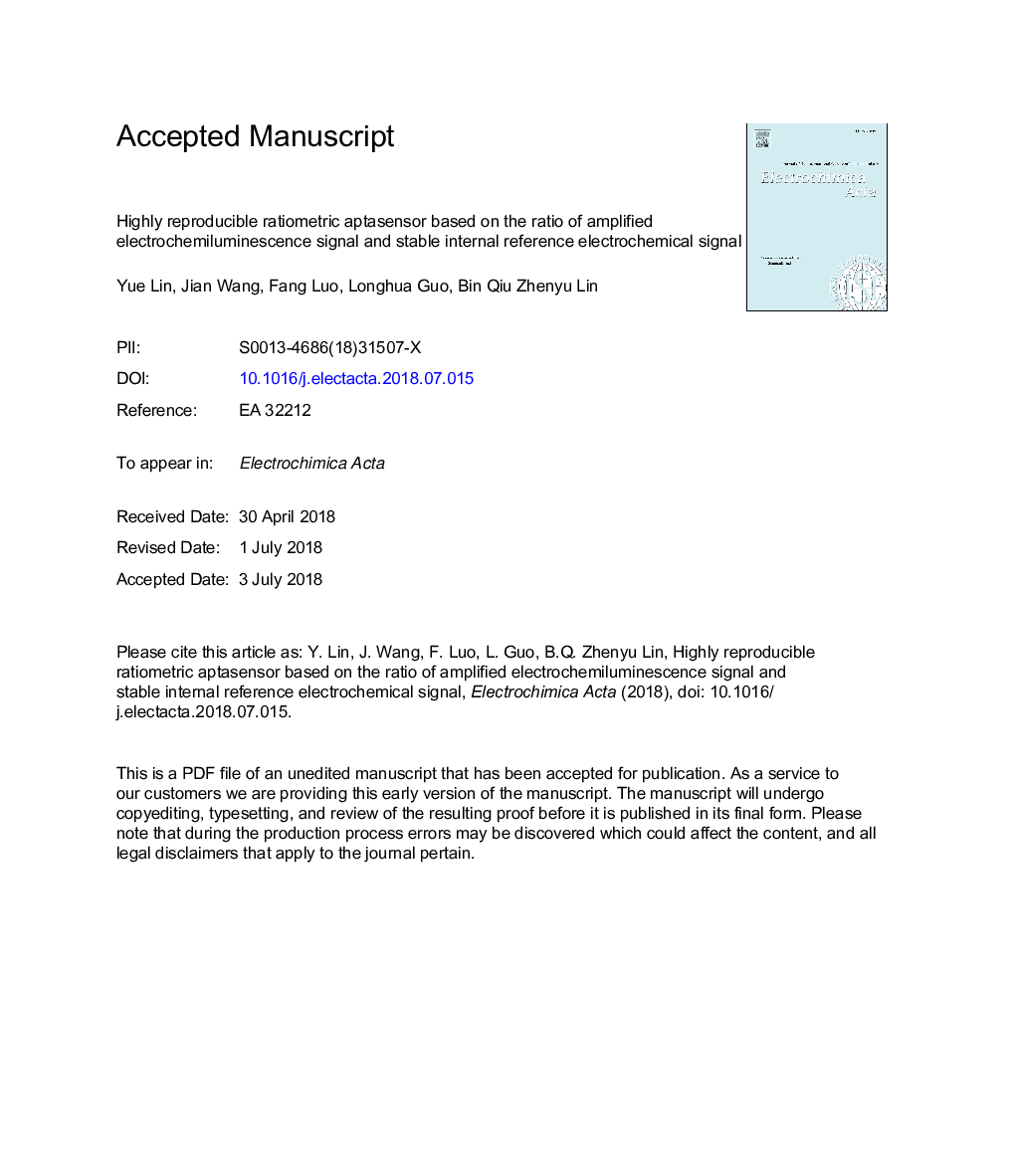| Article ID | Journal | Published Year | Pages | File Type |
|---|---|---|---|---|
| 6602065 | Electrochimica Acta | 2018 | 34 Pages |
Abstract
A highly reproducible ratiometric aptasensor has been developed based on the ratio of the enhanced electrochemiluminescence (ECL) signal and the stable electrochemistry signal for the first time. The ECL signal tag (Ru(phen)32+-DNA) was chosen as working probe (Ru(phen)32++-wp) and electrochemistry signal tag (methylene blue-DNA) as reference probe (MB-rp). The hybridization of Ru(phen)32++-wp and MB-rp in one structure insured the interdependence of two signals on the same sensing interface. OTA was chosen as a target model in this work and substrate DNA (sDNA) was designed to hybridize with OTA-aptamer (OTA-APT) in part, as well as the triggered chain of hybridization chain reaction (HCR). Only ECL signal of Ru(phen)32+-wp increased with the OTA existence while the electrochemical signal from MB-rp was stable as inter reference signal. The ratio value of the ECL/electrochemistry had a linear relationship with OTA concentration in the range of 12.40 pM to 6.19â¯nM with a correlation coefficient of 0.990, and the limit of detection was 5.6 pM. The proposed ECL ratiometric aptasensor has better reproducibility than that of the traditional ECL biosensor and been applied to detect OTA in real samples with satisfied results.
Related Topics
Physical Sciences and Engineering
Chemical Engineering
Chemical Engineering (General)
Authors
Yue Lin, Jian Wang, Fang Luo, Longhua Guo, Bin Qiu, Zhenyu Lin,
